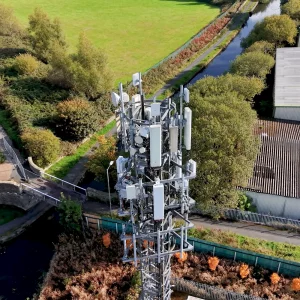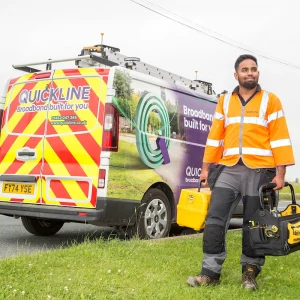Sponsored Links
Superfast Broadband Rollout Details Revealed by UK National Infrastructure Plan
Posted: 26th Oct, 2010 By: MarkJ
 The UK Government has finally released its National Infrastructure Plan 2010 and reaffirmed their commitment to spend £530m on "providing [the country with] the best superfast broadband in Europe by 2015". In addition it confirmed that a National Broadband Strategy (NBS) paper will be published in December 2010 (i.e. about one month late), which should give us much more detail.
The UK Government has finally released its National Infrastructure Plan 2010 and reaffirmed their commitment to spend £530m on "providing [the country with] the best superfast broadband in Europe by 2015". In addition it confirmed that a National Broadband Strategy (NBS) paper will be published in December 2010 (i.e. about one month late), which should give us much more detail.Lord Sassoon, Commercial Secretary to the Treasury, said:
"The immediate challenge is to rebuild the economy, creating the conditions for enterprise to flourish based on an expansion of the private sector. The infrastructure investment programme will help rebalance the economy across all regions and give industries the right conditions in which to grow, as well as itself providing a stimulus to short term growth.
So the Government is setting out, for the first time, a broad vision of the infrastructure investment required to underpin the UK’s growth. And, just as the UK made bold choices in the past, we need to embrace the options opened up by new technology – for example, in the roll out of superfast broadband, in offshore wind arrays and in high speed rail.
The Government aims to have the best superfast broadband network in Europe by 2015 and a functional level of broadband access for everybody. Studies, estimating the impact of broadband on output and employment in the UK, suggest that rolling out superfast broadband in the UK could have a significant positive impact both on gross value added in the economy and on employment in the information and communications technology sector and the wider
economy."
"The immediate challenge is to rebuild the economy, creating the conditions for enterprise to flourish based on an expansion of the private sector. The infrastructure investment programme will help rebalance the economy across all regions and give industries the right conditions in which to grow, as well as itself providing a stimulus to short term growth.
So the Government is setting out, for the first time, a broad vision of the infrastructure investment required to underpin the UK’s growth. And, just as the UK made bold choices in the past, we need to embrace the options opened up by new technology – for example, in the roll out of superfast broadband, in offshore wind arrays and in high speed rail.
The Government aims to have the best superfast broadband network in Europe by 2015 and a functional level of broadband access for everybody. Studies, estimating the impact of broadband on output and employment in the UK, suggest that rolling out superfast broadband in the UK could have a significant positive impact both on gross value added in the economy and on employment in the information and communications technology sector and the wider
economy."
As for yesterdays infrastructure plan, it doesn't say anything terribly new and merely confirmed most of what has already been reported. However we did spot a few interesting bits of information in the section concerning deployment methods for implementation of the governments broadband strategy.
4.38 To encourage private sector investment, the Government:The European Commission (EC), specifically its Digital Agenda (details), has already set out ambitious plans to bring basic broadband to all Europeans by 2013 and to ensure that, by 2020, all Europeans have access to much higher internet speeds of above 30Mbps and 50% or more of European households subscribe to internet access above 100Mbps.
• has been examining measures that will reduce the cost of infrastructure deployment, including infrastructure sharing. A number of operators have expressed interest in the ability to have access to BT’s existing network of ducts and poles. In its Wholesale Local Access market review, Ofcom has concluded that this should be required and is now working with BT on developing reference offers for duct and pole sharing;
• recently consulted stakeholders on the potential for sharing infrastructure with other utilities and concludes that legislation is unlikely to be required in this area in the short term, and will continue on a programme of industry engagement to encourage solutions to the practical barriers that are preventing more widespread infrastructure sharing between communications providers and other utilities;
• is consulting on whether there are changes to be made to the Electronic Communications Code, specifically in the area of new overhead infrastructure, which could help encourage greater deployment of broadband networks;
• is issuing guidance to industry and other stakeholders on how to make new buildings “broadband ready”, in the form of a Publicly Available Specification, by December 2010;
• intends to hold an auction in 2011 for 800MHz and 2.6GHz spectrum, suitable for delivering the next generation of mobile broadband, which has been freed up through the digital TV switchover; and
• intends to release at least a further 500MHz of public sector spectrum below 5GHz over the next ten years for new mobile communication uses, including mobile broadband.
4.39 To provide solutions in areas where the private sector needs support the Government will:
• test and develop the appropriate mechanisms for support with four pilot projects in rural and hard to serve communities in North Yorkshire, Cumbria, Herefordshire and the Highlands and Islands; and
• work with Local Enterprise Partnerships and the local authorities and communities in the identified locations to define the projects more precisely prior to running a procurement exercise through the winter of 2010 to provide specific levels of connectivity to the locations identified.
By contrast the UK governments Universal Service Commitment (USC) seeks to make a minimum broadband download speed of 2Mbps available to everybody in country by 2015. However it has failed set any specific targets for superfast broadband coverage and speed (see our new article - 'The Definition of UK Superfast Next Generation Broadband'), although aiming to have the "best superfast broadband in Europe by 2015" suggests a potentially difficult goal.
To achieve the best in Europe within 4-5 years we would have to beat country's like Sweden and the Netherlands, with national 100Mbps infrastructure already in the ground, and that's extremely unlikely to happen by 2015. It would simply take too long to build and the money isn't there. Likewise there's no mention of fixing the controversial Fibre Tax above, which unfairly penalises smaller fibre optic providers and prevents them from rolling out superfast broadband on a larger scale.
However the private sector alone should, under present rollout plans, be able to bring 'up to' 40-200Mbps fibre optic and cable broadband services within reach of 66%-70% by 2015 via BT and Virgin Media developments. The last 30% (The Final Third) will probably need a lot more than £530m, with the previous Labour government estimating at least £2bn-£3bn to reach 90% by 2017.
According to Ofcom and the Office for National Statistics (ONS), there are 18.6 million residential broadband connections in the UK with an average speed of 5.2 Megabits per second. In 2010 an estimated 30.1 million adults in the UK (60%) will have accessed the internet every day or almost every day, compared to 16.5 million (35%) in 2006. Good internet is vital.
National Infrastructure Plan 2010 (PDF, 1.35MB)
http://hm-treasury.gov.uk/d/nationalinfrastructureplan251010.pdf
Search ISP News
Search ISP Listings
Search ISP Reviews
Latest UK ISP News








Cheap BIG ISPs for 100Mbps+
150,000+ Customers | View More ISPs
Cheapest ISPs for 100Mbps+
Modest Availability | View More ISPs
Latest UK ISP News
Helpful ISP Guides and Tips
Sponsored Links
The Top 15 Category Tags
- FTTP (6717)
- BT (3862)
- Politics (3033)
- Business (2733)
- Openreach (2628)
- Building Digital UK (2486)
- Mobile Broadband (2434)
- FTTC (2132)
- Statistics (2100)
- 4G (2062)
- Virgin Media (1997)
- Ofcom Regulation (1761)
- 5G (1692)
- Fibre Optic (1586)
- Wireless Internet (1581)
Sponsored
Copyright © 1999 to Present - ISPreview.co.uk - All Rights Reserved - Terms , Privacy and Cookie Policy , Links , Website Rules































